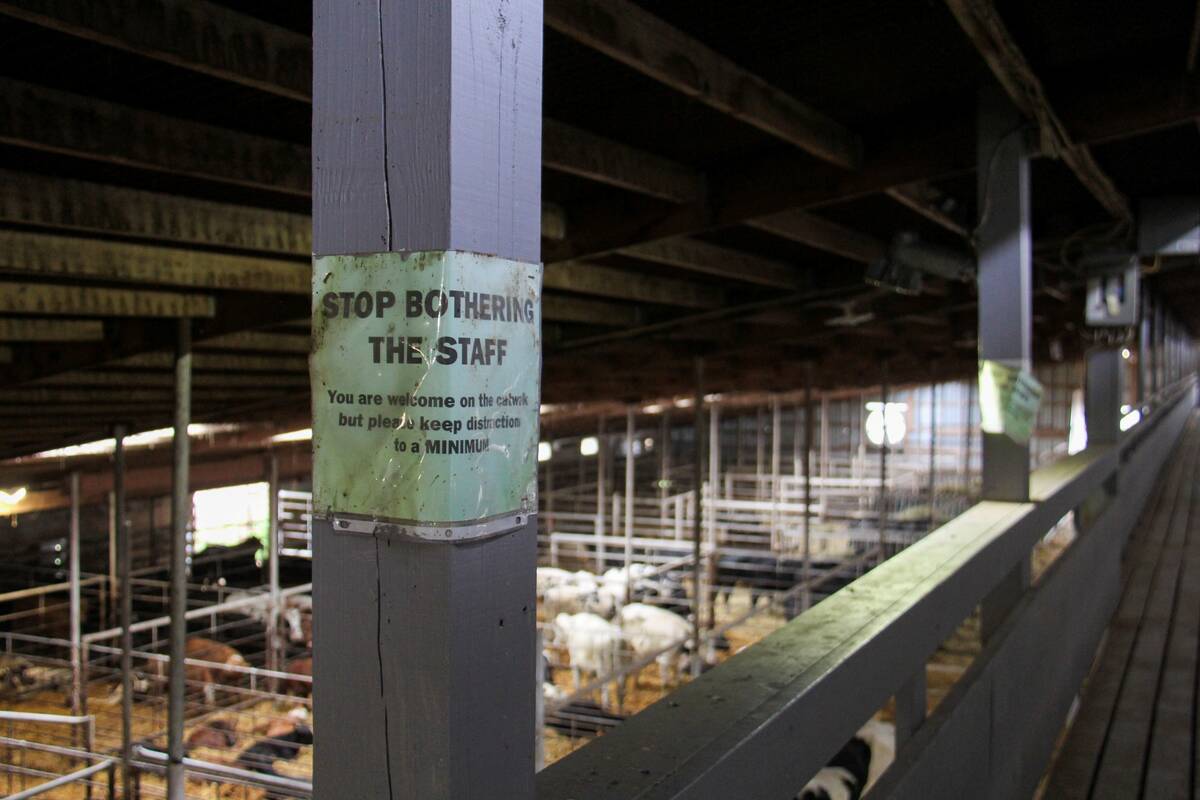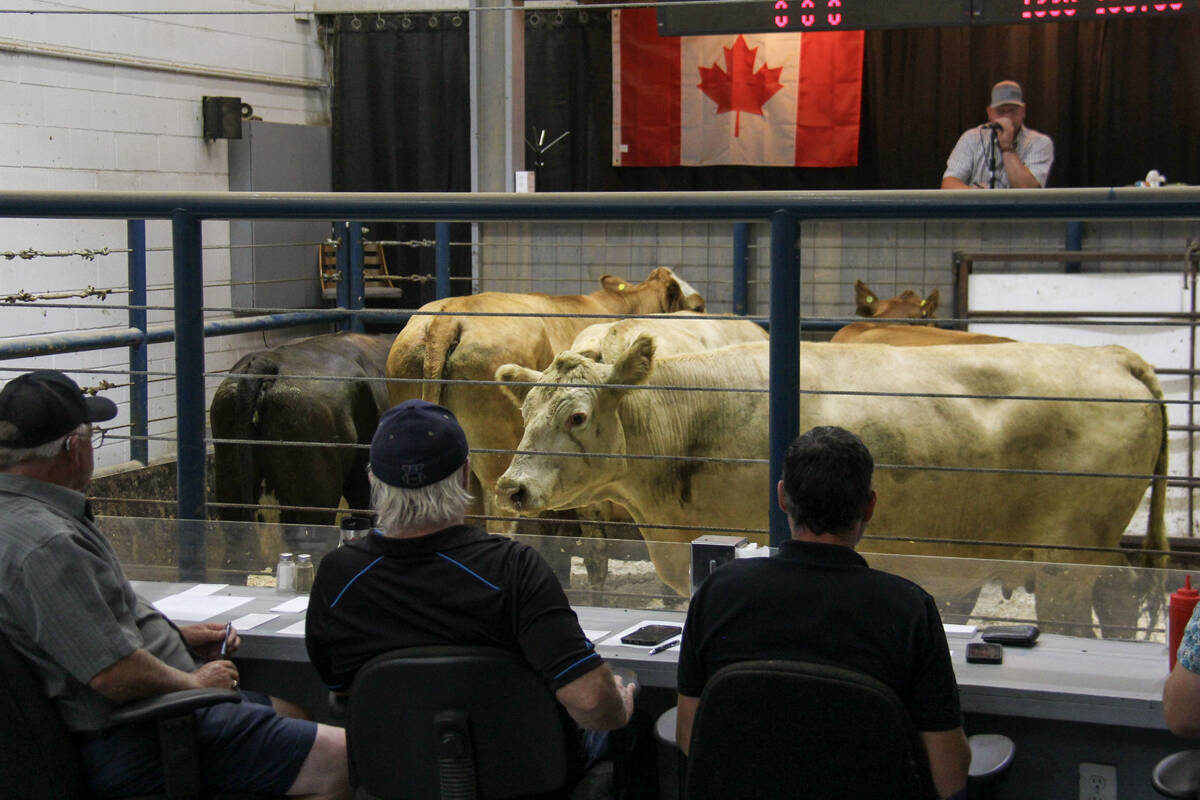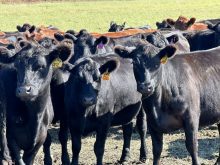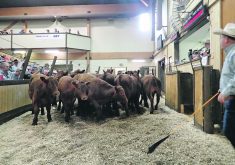Glacier FarmMedia – Since September 2024, one Manitoba livestock auction and two in Saskatchewan have closed their doors, with some blame put on decreasing cattle sales.
Given the diminishing Prairie cattle herd numbers, do these closures signal a trend of decline for Manitoba auction marts? It doesn’t appear so.
Auction mart owners and managers say they’ve adapted to changing times and — in some cases — seen increased sales.
Read Also

Manitoba extends Crown land rent freeze
Manitoba government links the continued rental rate freeze on grazing and forage leases to economic and environmental challenges facing the industry
Trendlines
Canada’s beef cattle herd has been on a downward trend for the better part of two decades.
On Jan. 1, 2005 — still in the thick of the BSE crisis — all cattle on beef operations totalled 1.40 million head, Statistics Canada data shows. By 2015, it had fallen to about 959,300 head at the start of the year and — after spiking for a couple of years in the late 2010s — declined to around 835,600 head this January.
Provincial data in Manitoba shows the number of cattle sold through auction marts has also declined over the years, though not steadily. In 2010, auction marts reported 408,834 cattle through their rings. In 2024, the total was 316,325 head.
These stats may not reflect all cattle sold because some may be sold through alternative venues such as digital sales and bred cow sales.
The Brandon auction, for instance, saw its reported sales decline from 60,243 head in 2010 to 24,030 head in 2024.
Ashern has seen a relatively steady decline from nearly 69,500 head in 2010 to a bit more than 35,800 in 2024.
Drought has also forced farmers to sell breeding stock, and auction manager Kirk Kiesman cited higher open rates among cows in that region in recent years.
In response, the Ashern auction has streamlined its sale schedule in slower months. It has also modestly increased the commission it charges for selling cattle, Kiesman said.
However, as a producer-owned co-operative, it’s under less pressure to turn high profits and has been able to keep costs low.
Some markets see growth
Despite a downward trend, provincial stats don’t show uniform decline.
Gladstone, after seeing its sales fall from 38,324 in 2010 to 22,525 head in 2016, has seen its numbers rebound to around 36,000 animals in 2023 and 2024.
Auctions at Killarney, Ste. Rose and Virden have also seen increased sales since 2010, according to provincial data.
The closure of the Brandon auction mart, announced near the end of July, may also drive more cattle to nearby locations.
High cattle prices may be driving more sales. Anecdotal evidence suggests that after years of drought, producers are exiting the business while the getting is good.
Producers are also taking advantage of auctions’ price discovery, said Rick Wright, chief executive officer of the Livestock Markets Association of Canada. Last year, big producers who may have usually sold directly or electronically brought cattle to auctions instead.
“The market’s been so volatile, you know. There’s just so many dollars involved,” Wright said.
“We’ve never seen these prices before in our lives. So, you know, the guys are wanting to squeeze every dollar they can out of those cattle.”
New ways of doing things
Auction marts are adapting to attract and retain customers.
“They’re not taking their customer base for granted anymore,” Wright said.
“They’re having to work harder to get their numbers.”
Allan Munroe, owner and manager of the Killarney auction, said auction marts have to be aggressive to maintain market share.
“You’re improving or you’re not, and we’ve tried really hard to improve every year.”
This has included branching out to new sale methods.
“We used to be strictly a regular sale,” Munroe said.

“We still do a fair bit of that, but we put as many onto the show list as we can.”
The auction began offering a show list about 10 years ago — sorting and weighing cattle ahead of time so buyers have more information about what will be sold. It charges sellers a bit more for the service, though Munroe said this mainly covers the feed for after the cattle are weighed.
Kiesman said the Ashern acution also offer a show list and has seen more sellers using that option.
Gladstone Auction Mart manager Blaine Huston also said they use a show list as an additional way to serve clients there.
Some auctions have begun offering digital sales and online auctions. Killarney simulcasts bred cow sales online, Munroe said.
This is Ashern’s second year selling digitally through TEAM Auction Sales, Kiesman said, which has added additional sales.
Digital sales may be less prevalent in Manitoba than in the rest of Western Canada.
“It really only works if you have semi load lots of cattle to sell,” said Wright.
Cow-calf producers in Manitoba tend to have smaller herds. Wright said that while producers with 50 steers to sell can list them online, they probably won’t get much attention from Ontario or Alberta buyers compared to larger sellers.
Other challenges
The shrinking cow herd is viewed as a challenge.
“There’s a reason that Brandon is closed and it is in big part to fewer overall numbers around,” Munroe said.
Government transport and traceability regulations can be tough, he added.
Labour is also an ongoing challenge mentioned by most managers to whom Glacier FarmMedia spoke.
“It’s hard to hire good people,” said Brad Kehler, manager of the Grunthal Livestock Auction Mart.
Labour has been a long-time struggle for the agricultural sector. Auctions may not be able to offer full-time work or may see hours fluctuate seasonally. For instance, for Gladstone auction employees, it may only be a two to three-day work week at times.
“It’s hard for people if they aren’t farming on the side or doing something on the side to make a living off of that, right?” Huston said.
















